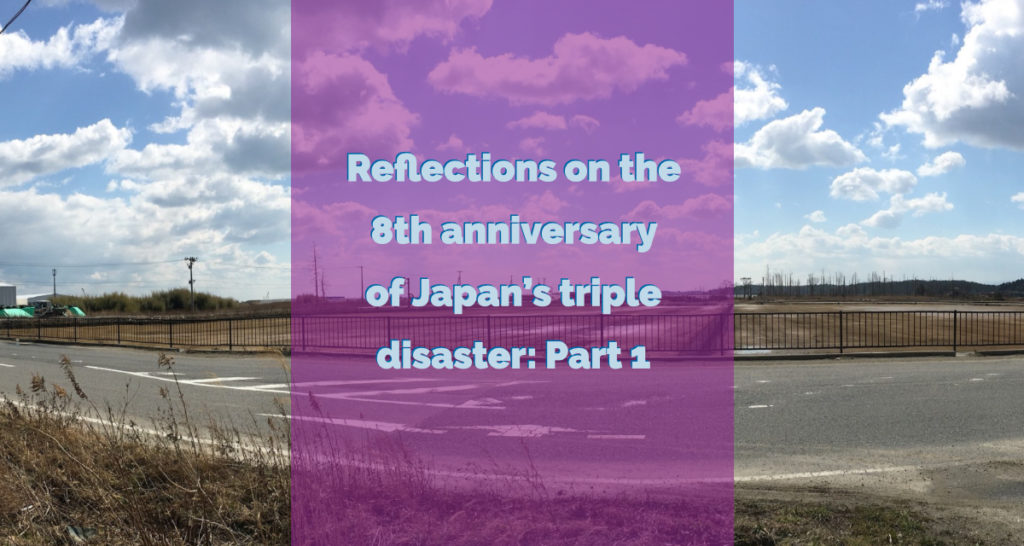Reflections on the Eighth Anniversary of Japan’s Triple Disaster: Part 1
March 11, 2019 marked eight years since Japan’s “Triple Disaster.” Communities and individuals are still marked by this disaster and continue the work of healing. Mission Co-worker in Japan, Jeffrey Mensendiek, shares some reflections from a recent trip he took to Fukushima with Derek Duncan, Area Executive for East Asia and the Pacific.
UNKEPT
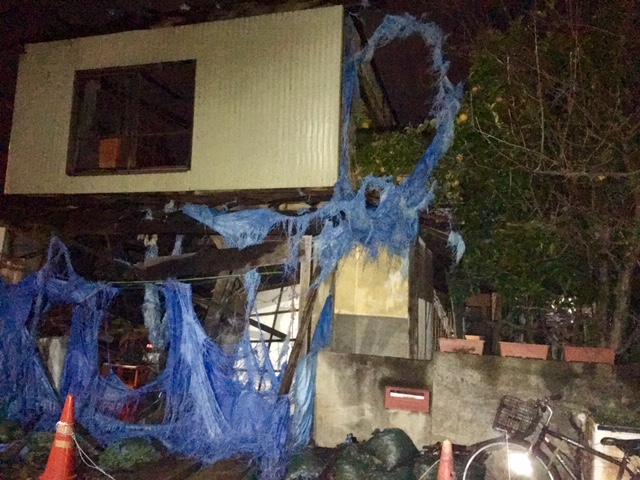 March 7th (Day One), Derek Duncan (from Global Ministries in Cleveland) and I stayed in Fukushima in a hotel near the train station. Rev. Hoshina (vice moderator of the Tohoku Conference, UCCJ) came to meet us. We first visited his church which had been completely rebuilt after the original red brick structure crumbled due to the earthquake of eight years ago. After briefly seeing the Fukushima Church, we went out to dinner with him and his wife. Very pleasant company. It happened to be their wedding anniversary.
March 7th (Day One), Derek Duncan (from Global Ministries in Cleveland) and I stayed in Fukushima in a hotel near the train station. Rev. Hoshina (vice moderator of the Tohoku Conference, UCCJ) came to meet us. We first visited his church which had been completely rebuilt after the original red brick structure crumbled due to the earthquake of eight years ago. After briefly seeing the Fukushima Church, we went out to dinner with him and his wife. Very pleasant company. It happened to be their wedding anniversary.
Eight years ago they were living in Sendai. Three years ago they decided to move to Fukushima city to minister to a broken community in a broken land. They shared with us their insights saying, “We only came to know these things by living here. Things we would have never known if we had been living in Sendai.” The two cities are only sixty miles apart, and yet they represent a world of difference.
Their first insight had to do with the “unkept” nature of the city. “Sendai is bright and beautiful, but in this city, no one is investing in their houses and buildings. They just don’t do anything to invest in the upkeep of their property. Likewise, the trees and shrubbery in public parks are left unkept. The older generation senses that the future is dim for the city. “There are many houses near us where half of the house has collapsed on account of the earthquake eight years ago. But people continue to live there without fixing the house.” After dinner we walked by one such house. It was devastating to think that someone lived in the same two story house. The dilapidated structure gave us a peek into the depression that is in the hearts of so many people. Their love for Fukushima ties them to their homes, and yet they have practically given up imagining a future of promise.
MUNEN
 The Hoshinas used the Japanese word “munen” to refer to the feelings that people in Fukushima carry in their hearts. Munen means regret, resentment, vexation, to be mortified. Both of the Hoshinas are pastors. They minister to the local people who have decided to stay in their homes despite the fact that the nuclear plume dumped large amounts of nuclear waste on their city. “Imagine,” Rev. Hoshina said, “a husband and wife who are trying to look after the needs of their elderly parents in the wake of the nuclear accident. It is all they can do to establish a sense of peace in their home, and to look after their parents. They are afraid that their decision to stay and look after grandpa and grandma may have exposed their own children to the risks of radiation. But they feel they couldn’t have done otherwise. Their anger is not expressed toward the authorities, but rather they blame themselves. They keep these feelings in their hearts, and the feelings of “munen” stew within them.” Derek asked, “Why don’t they get angry at the authorities?” Munen is like a volcano boiling with the fires of internal rage. The fear is that they will take out their anger on themselves. Ministering in Fukushima is a challenging ministry of accompaniment.
The Hoshinas used the Japanese word “munen” to refer to the feelings that people in Fukushima carry in their hearts. Munen means regret, resentment, vexation, to be mortified. Both of the Hoshinas are pastors. They minister to the local people who have decided to stay in their homes despite the fact that the nuclear plume dumped large amounts of nuclear waste on their city. “Imagine,” Rev. Hoshina said, “a husband and wife who are trying to look after the needs of their elderly parents in the wake of the nuclear accident. It is all they can do to establish a sense of peace in their home, and to look after their parents. They are afraid that their decision to stay and look after grandpa and grandma may have exposed their own children to the risks of radiation. But they feel they couldn’t have done otherwise. Their anger is not expressed toward the authorities, but rather they blame themselves. They keep these feelings in their hearts, and the feelings of “munen” stew within them.” Derek asked, “Why don’t they get angry at the authorities?” Munen is like a volcano boiling with the fires of internal rage. The fear is that they will take out their anger on themselves. Ministering in Fukushima is a challenging ministry of accompaniment.
The next day the Hoshinas showed us an elementary school in their neighborhood where tons of radioactive topsoil had been scraped off the surface of the school playground eight years ago and buried underground. Just recently, the area was shielded off, the playground dug up, and tons and tons of radioactive dirt had been trucked away somewhere. This while elementary school classes were going on.
ROAD THROUGH NO-MAN’S LAND
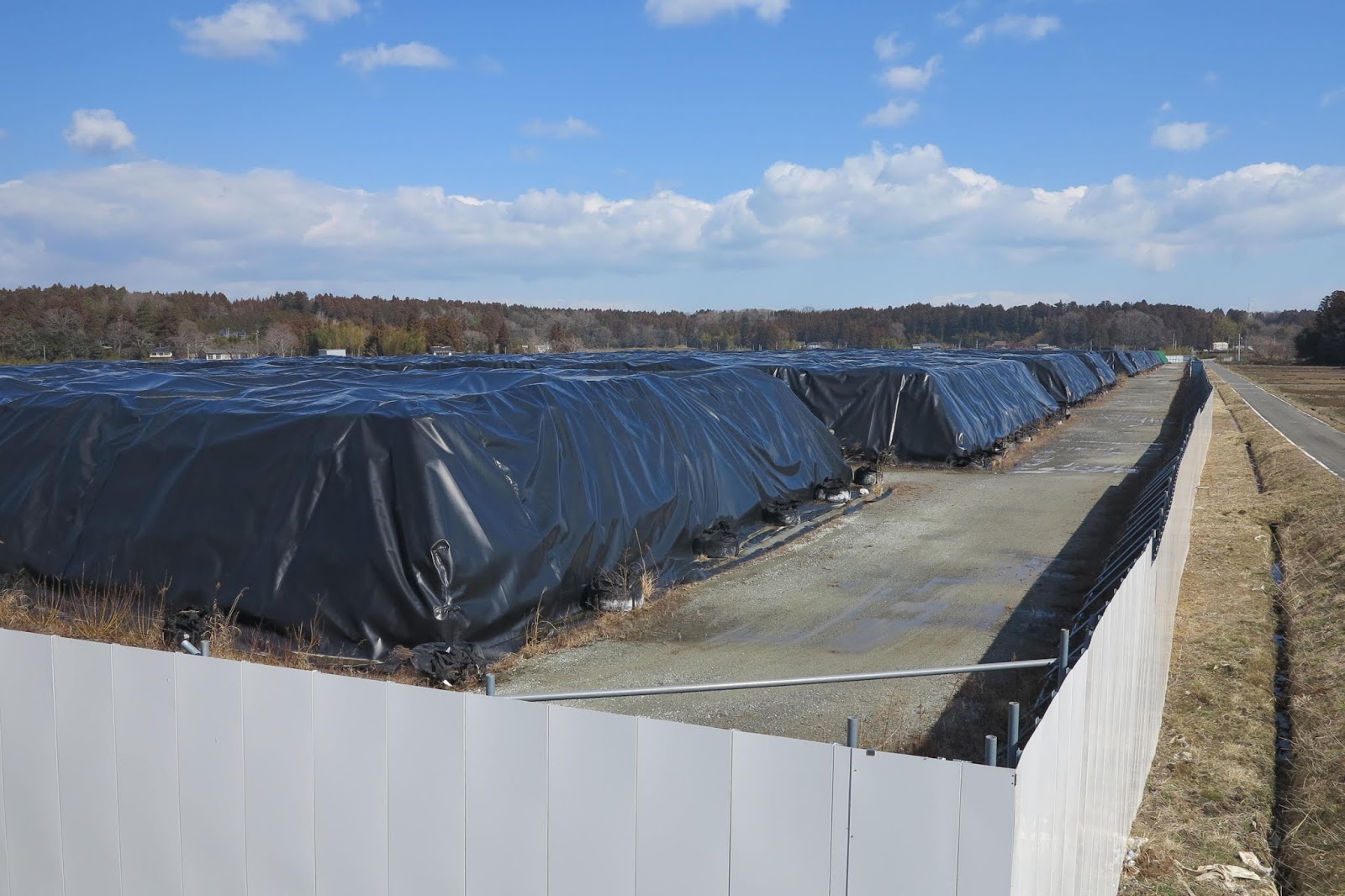 March 8th (Day Two), our guide, Rev. Etsuya Kataoka, came to pick us up at our hotel. We drove from Fukushima City to the coastal town of Namie near where the Tokyo Electric Company nuclear plants are. The road (Rte 114) took us through the hills forty four miles to the coastal plains of Namie. We started to see areas blocked off where black polyethylene bags containing radioactive soil were being stored. Then Etsuya pointed out the road blocks on each side of the road, blocking entrance into any of the houses along the way. The government, he told us, had “cleansed” the road to bring down the level of radiation. But any houses or roads off to the side were off limits. The hills and forests are still covered with high levels of radiation. The single road connects Fukushima City to the coastal towns near Namie. However, everything on both sides is a dangerous no-man’s land. The Japanese government has been focused cleansing areas with higher population density. With the Olympics coming in 2020 Japan wants to prove to the world that the country has recovered from the disaster.
March 8th (Day Two), our guide, Rev. Etsuya Kataoka, came to pick us up at our hotel. We drove from Fukushima City to the coastal town of Namie near where the Tokyo Electric Company nuclear plants are. The road (Rte 114) took us through the hills forty four miles to the coastal plains of Namie. We started to see areas blocked off where black polyethylene bags containing radioactive soil were being stored. Then Etsuya pointed out the road blocks on each side of the road, blocking entrance into any of the houses along the way. The government, he told us, had “cleansed” the road to bring down the level of radiation. But any houses or roads off to the side were off limits. The hills and forests are still covered with high levels of radiation. The single road connects Fukushima City to the coastal towns near Namie. However, everything on both sides is a dangerous no-man’s land. The Japanese government has been focused cleansing areas with higher population density. With the Olympics coming in 2020 Japan wants to prove to the world that the country has recovered from the disaster.
On a few occasions we got out of the car to take pictures of the gates that silently stand as a reminder of the nuclear disaster. As we neared Namie we also began to see more open areas cordoned off with polyethylene bags. In my imagination I thought of the farmers who were practically forced to lend their land for temporary storage sights for radioactive soil bags. Some townships in the area were against bringing the nuclear plants to Fukushima. I was reminded once again of the word “munen.”
FLASH FORWARD
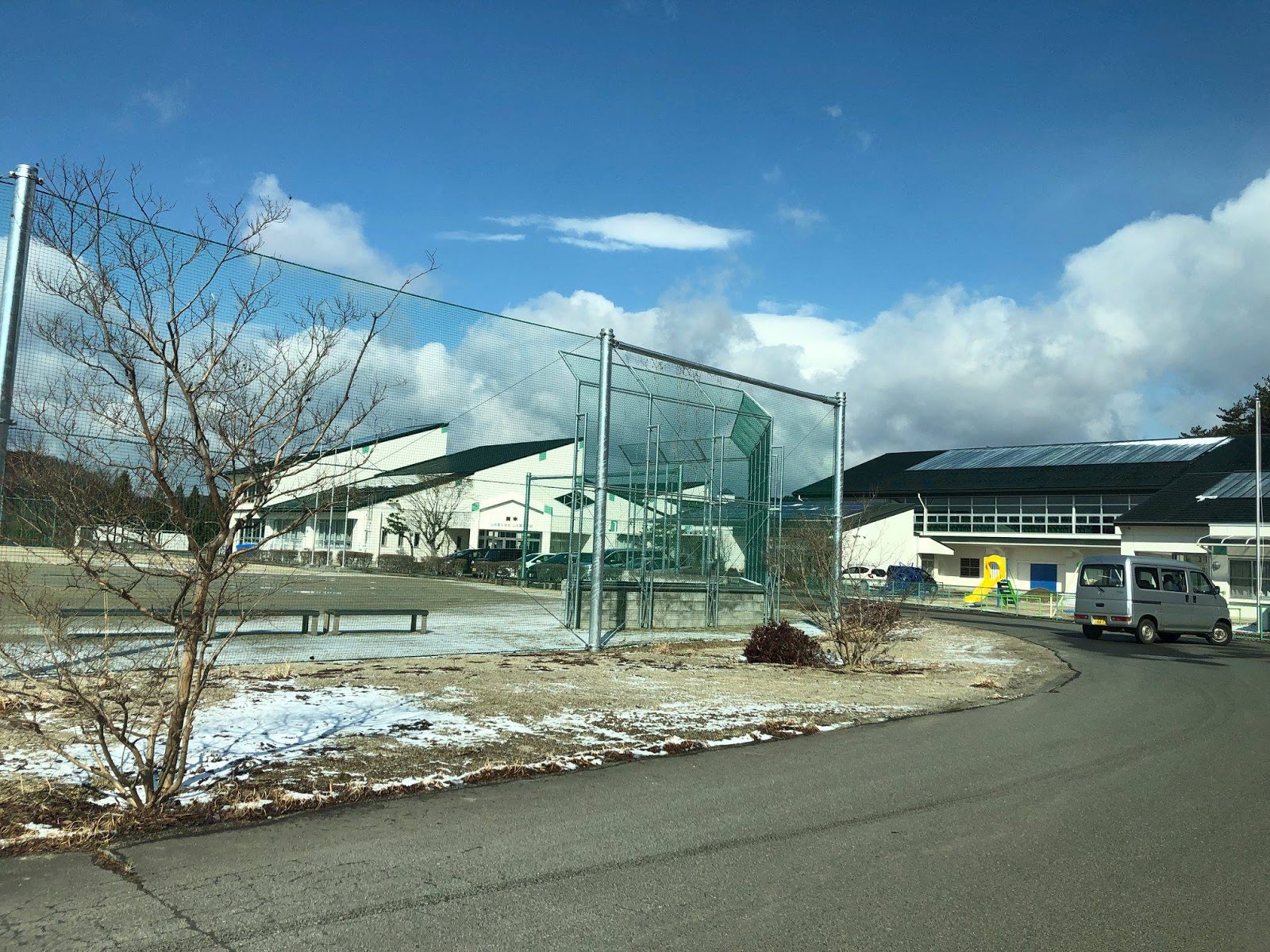 On our way from Fukushima City to Namie we drove by some elementary schools. Etsuya was especially interested to see the Yamakiya Elementary and Junior High School which was recently in the news. He reported that despite the fact that a brand new facility was prepared for local residents, all eight of the sixth graders who were expected to move on to the seventh grade decided to move to another school. The government and local Fukushima prefecture are doing all they can to encourage families to send their children to local schools. In many cases the government has even established new schools with the best facilities and teachers so that families will be enticed to resettle in areas with high radiation. Yet, young families with children are reluctant to return to Fukushima. In the case of the Yamakiya School, residents actually defied the expectation of the local authorities and moved away.
On our way from Fukushima City to Namie we drove by some elementary schools. Etsuya was especially interested to see the Yamakiya Elementary and Junior High School which was recently in the news. He reported that despite the fact that a brand new facility was prepared for local residents, all eight of the sixth graders who were expected to move on to the seventh grade decided to move to another school. The government and local Fukushima prefecture are doing all they can to encourage families to send their children to local schools. In many cases the government has even established new schools with the best facilities and teachers so that families will be enticed to resettle in areas with high radiation. Yet, young families with children are reluctant to return to Fukushima. In the case of the Yamakiya School, residents actually defied the expectation of the local authorities and moved away.
On another note, Etsuya told Derek and me about a psychiatrist friend of his who has recently been studying something called “flash forward.” His main field of research has been the study of people who suffer from flashbacks due to past experiences of trauma and ongoing PTSD. However, in the case of Fukushima the psychiatrist says people suffer from something called “flash forwards.” This means that people suddenly get panic attacks when they think about the future. The nuclear disaster has robbed them of their homes, land, and livelihood. Not only have they lost what used to be their day-to-day lives, but they now don’t know how to project a future for themselves. Thoughts of the future are the source of great stress which keeps them awake at night.
THE NAMIE CHURCH
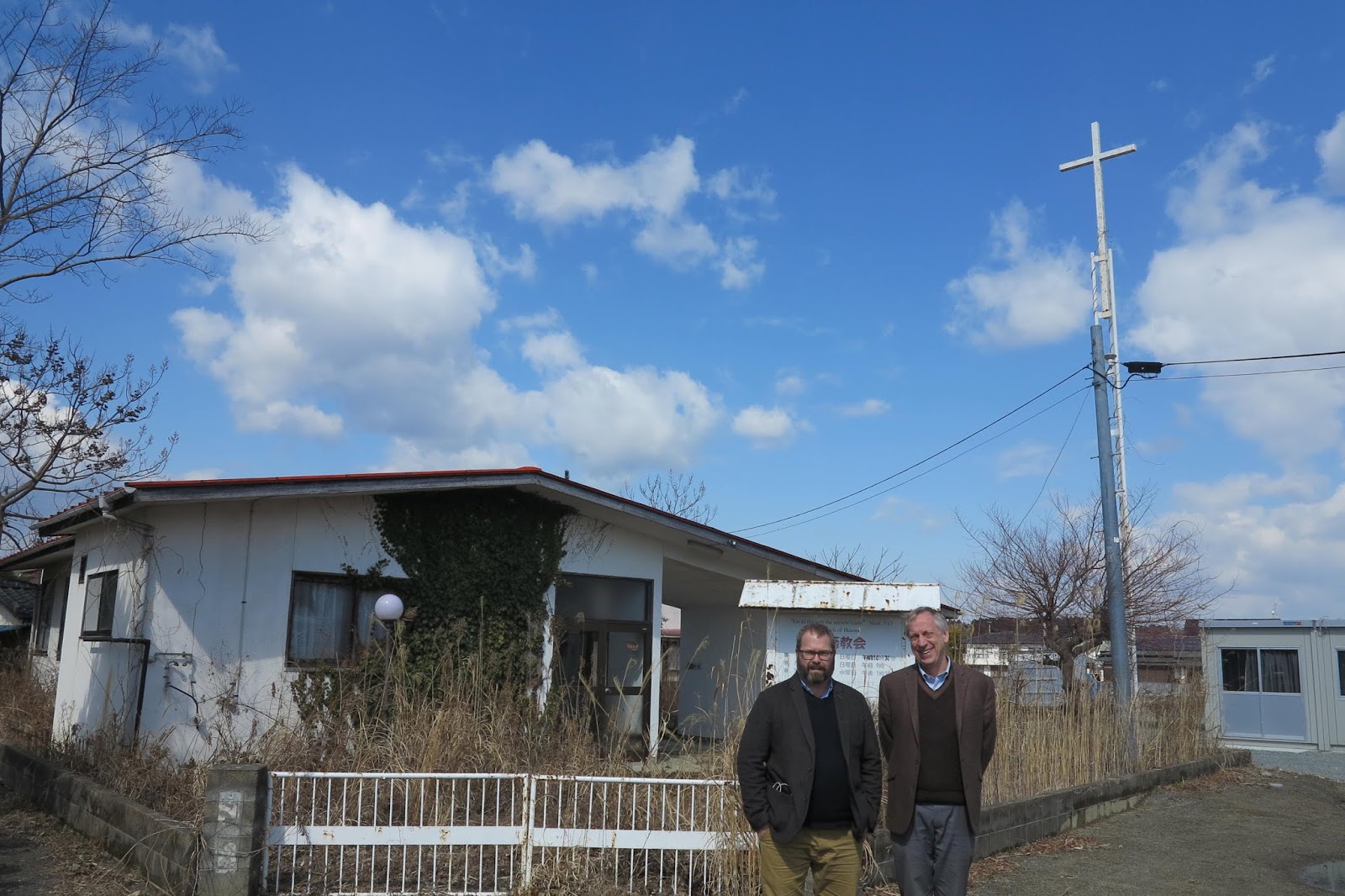 As we drove out of the hills and forests, the plains of Namie opened up before us. Namie city is 15 miles north of the reactors. They say that only 10% of the residents (900 people) have moved back into the area. Noticeable were the open lots. Residents were told that the government would tear down and remove their houses for free. In fact, they were told it would be illegal to tear down one’s house and dispose of the debris by yourself because of the high levels of radiation covering the houses in the Namie area.
As we drove out of the hills and forests, the plains of Namie opened up before us. Namie city is 15 miles north of the reactors. They say that only 10% of the residents (900 people) have moved back into the area. Noticeable were the open lots. Residents were told that the government would tear down and remove their houses for free. In fact, they were told it would be illegal to tear down one’s house and dispose of the debris by yourself because of the high levels of radiation covering the houses in the Namie area.
Soon we came to the Namie Church. It has been abandoned for these past eight years. The Tohoku Conference has placed a Safecast Radiation Monitor on the wall of the church that takes regular readings of radiation in the air. Etsuya told us that the Conference has these Safecast monitors in two places, and they can always access the radiation levels in real time. Not only does this help the church to take its own records of radiation levels in the air, but it also will help alert the Conference in the case of a sudden spike in radiation levels. The Fukushima reactors are still very volatile. A heavy storm or earthquake could cause the reactors to collapse – thus giving rise to higher levels of radiation.
The Namie Church has had a troubled history. There once was a pastor who was very outspoken about the dangers of the nuclear industry. He spoke so fervently about the issue, such that the church members (all with some kind of connection to the Fukushima nuclear industry) stopped coming to church. After several years the pastor had to leave because he didn’t have any church members. It was a few years after this incident that a new pastor came to the Namie Church. He had a passion for roses, and planted roses all around the church grounds. It was known as the Rose Church at the time of the disaster.
FISHING VILLAGE GONE
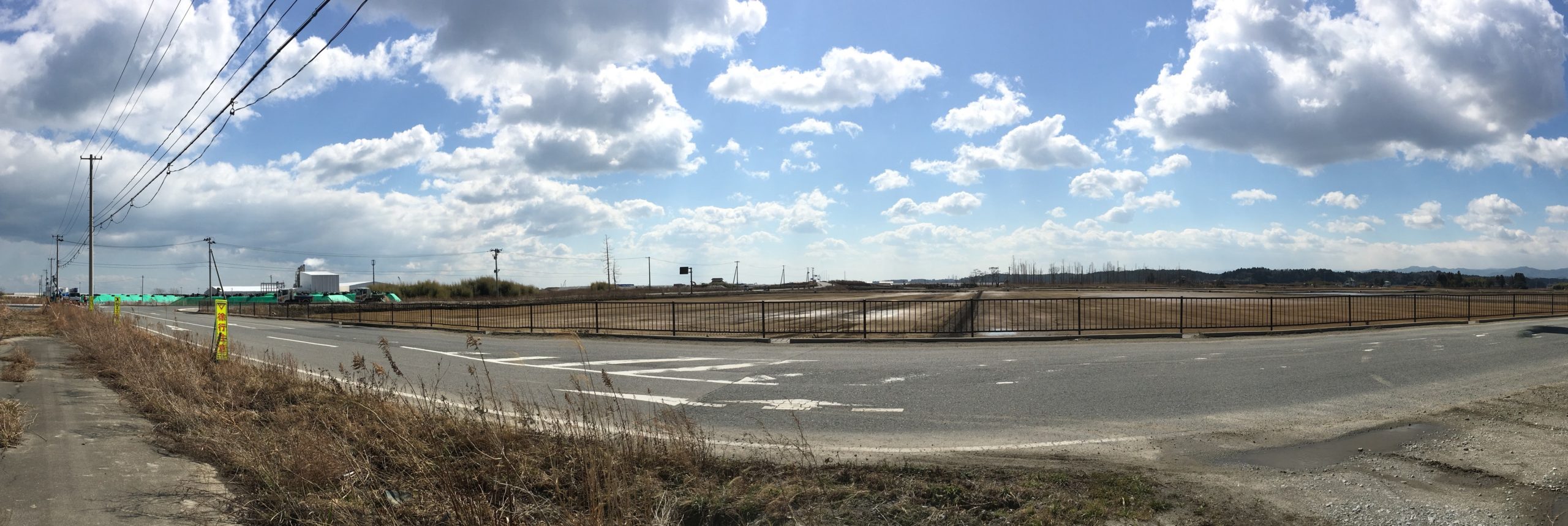 There used to be a fishing village on the coast called Okedo. The tsunami took out the whole village. It used to be a thriving place, popular also as a beach for swimming. Etsuya took us to see the area which has now been flattened. Trucks were everywhere carrying soil from here to there. Some houses still stand. The reason they haven’t been taken down is because no one has come forward as the owner. A river runs into the ocean where Okedo used to be. Plans are for the whole area to be made into a park.
There used to be a fishing village on the coast called Okedo. The tsunami took out the whole village. It used to be a thriving place, popular also as a beach for swimming. Etsuya took us to see the area which has now been flattened. Trucks were everywhere carrying soil from here to there. Some houses still stand. The reason they haven’t been taken down is because no one has come forward as the owner. A river runs into the ocean where Okedo used to be. Plans are for the whole area to be made into a park.
I noticed a large factory building which looked like it had been built recently. Etsuya said that it was an incinerator made to burn the radioactive soil in the polyethelene bags. I asked, “Why would they want to do that?” Etsuya answered, “By burning the soil you can compress the debris into smaller packages which are easier to store. The government claims that there will be no adverse effect to the air and water quality in the area, but we are skeptical. Everyday there is smoke coming out of the smoke stack. Who knows how safe that is.”
Another way that the government has decided to solve the problem of these polyethelene bags is to pass a law (passed last fall) enabling construction companies to use the soil for construction purposes. This means highways, landfills etc. Now construction companies have the green light to carry the radioactive soil all over Japan.
Jeffrey Mensendiek serves with J.F. Oberlin University in Tokyo, Japan. His appointment is made possible by your gifts to Disciples Mission Fund, Our Church’s Wider Mission, and your special gifts.

